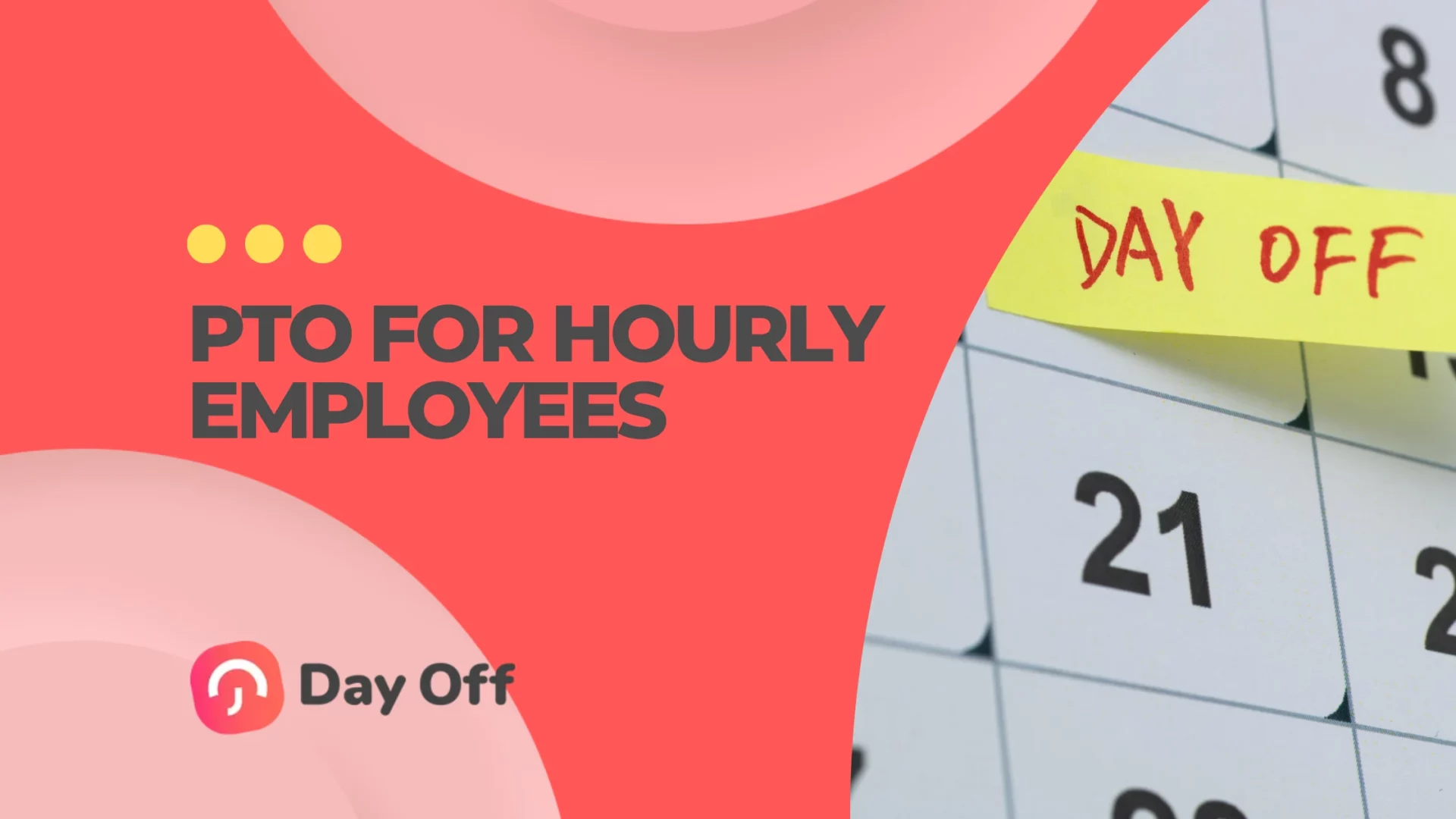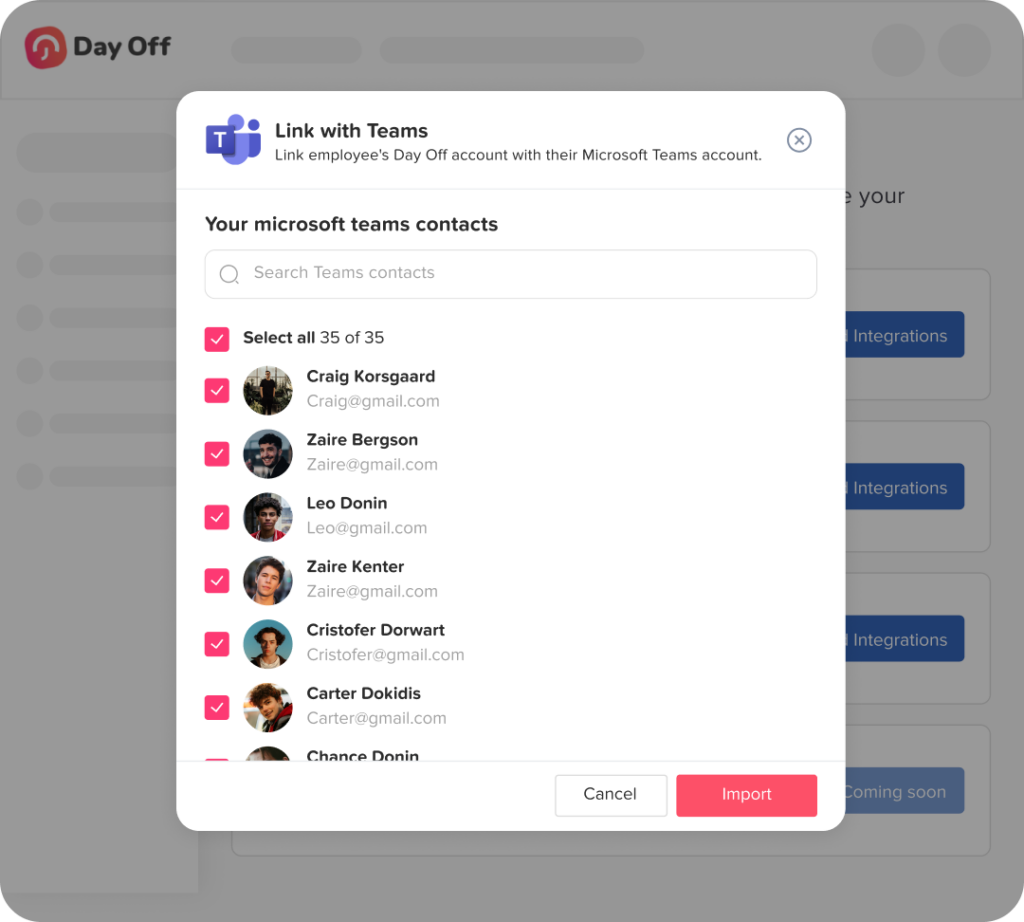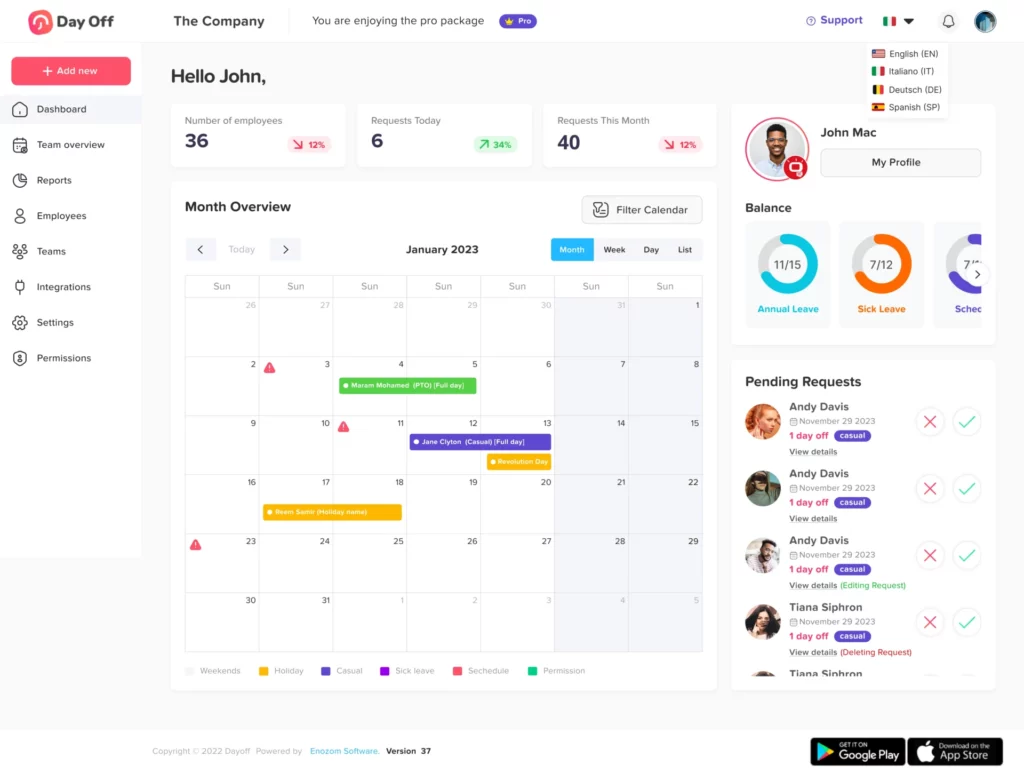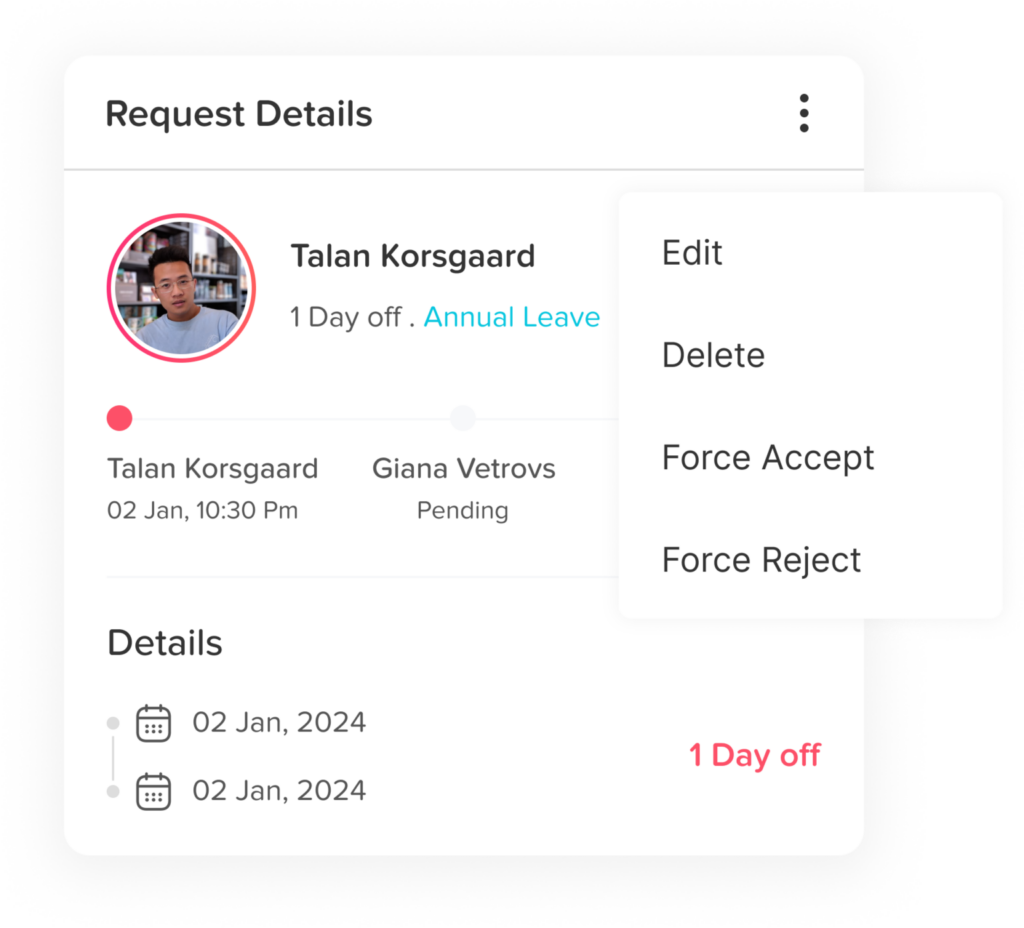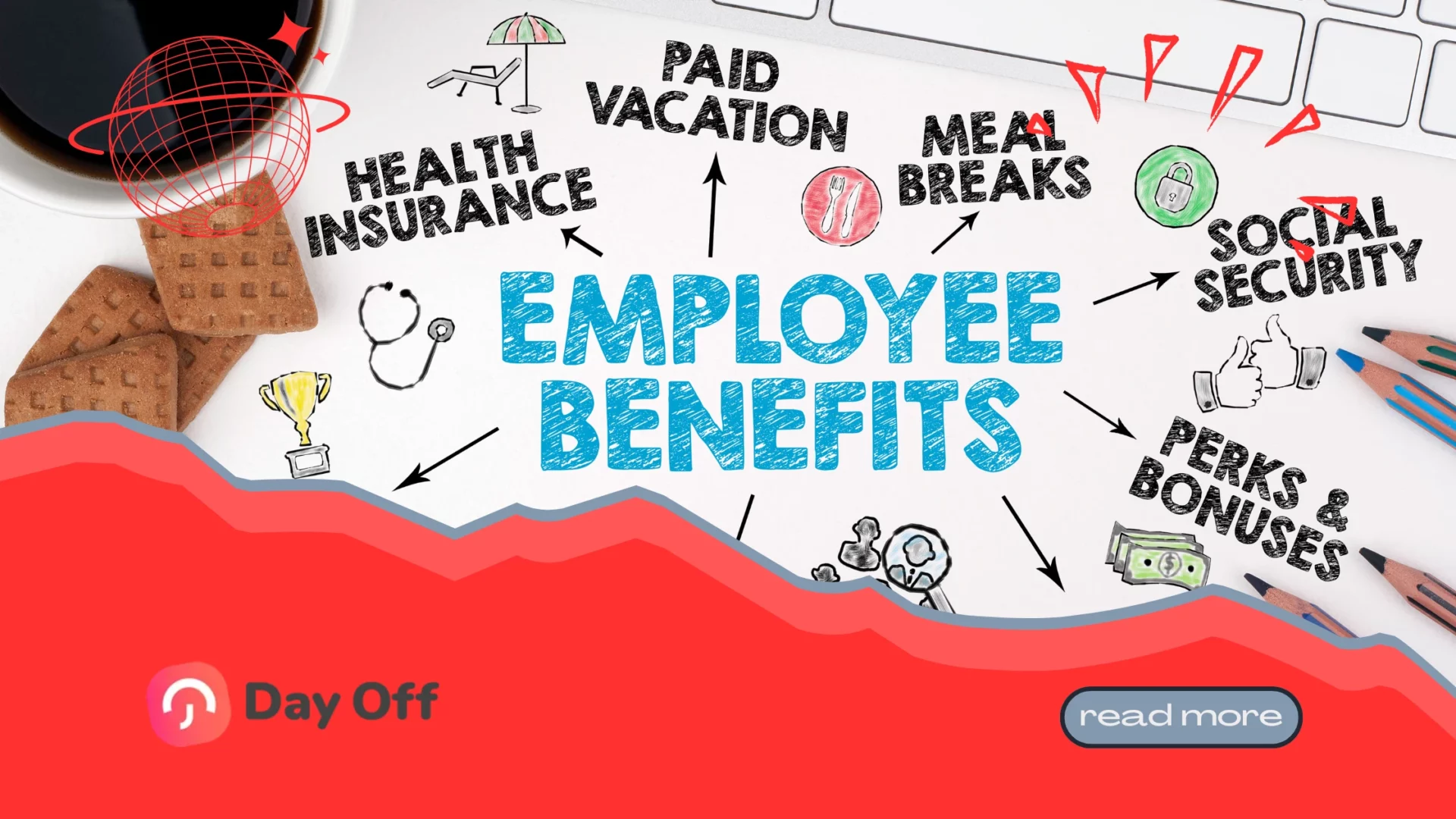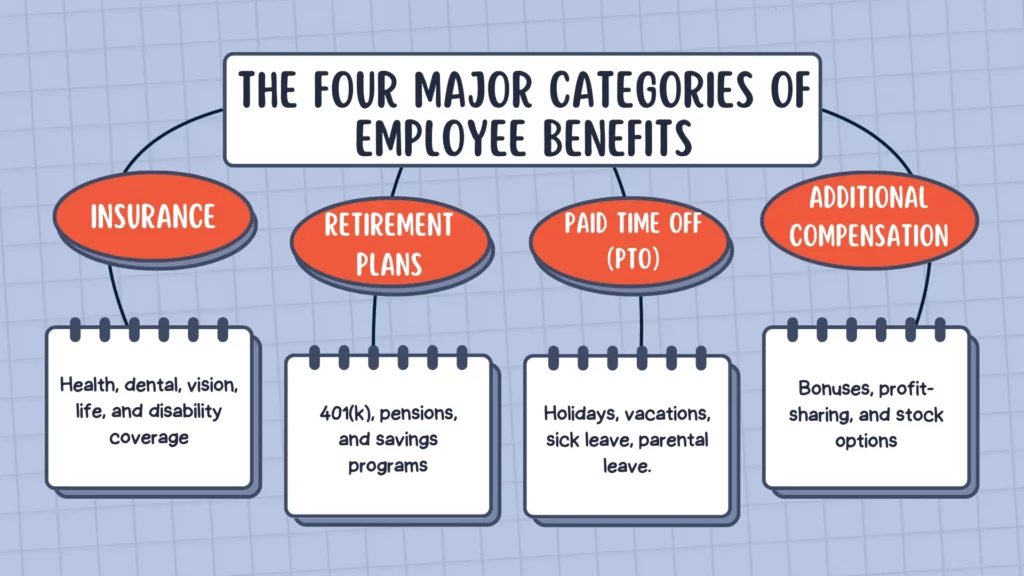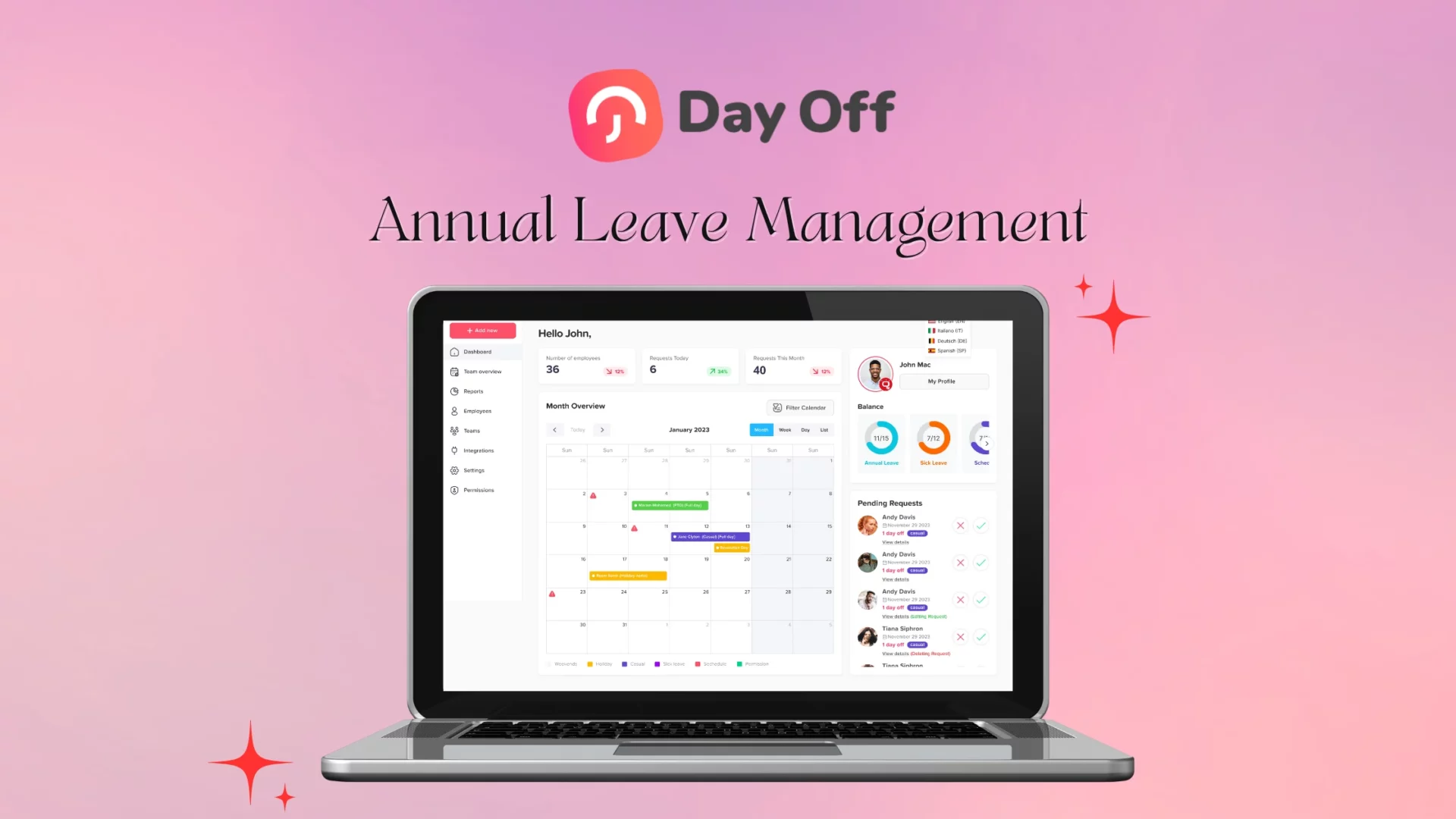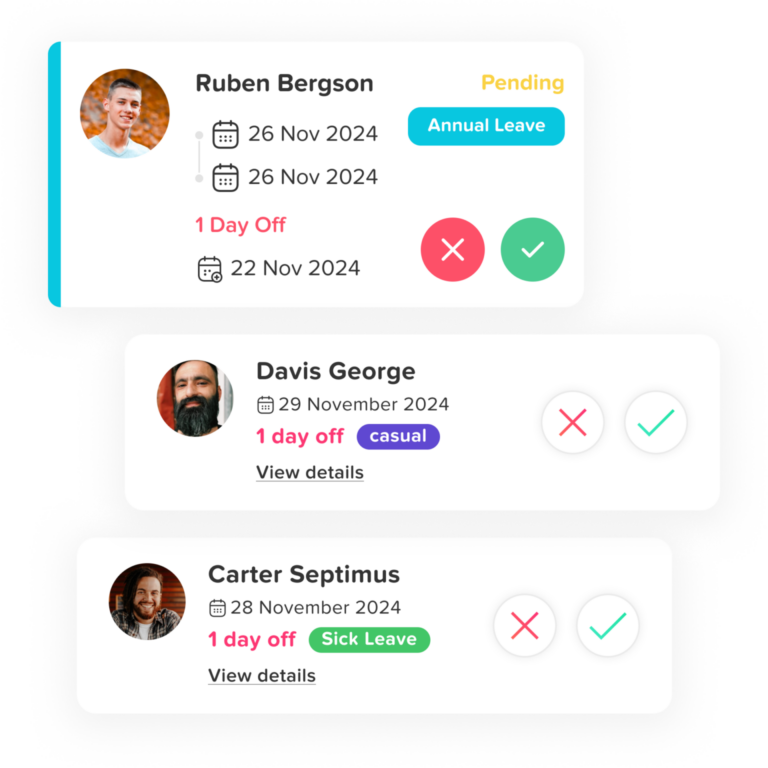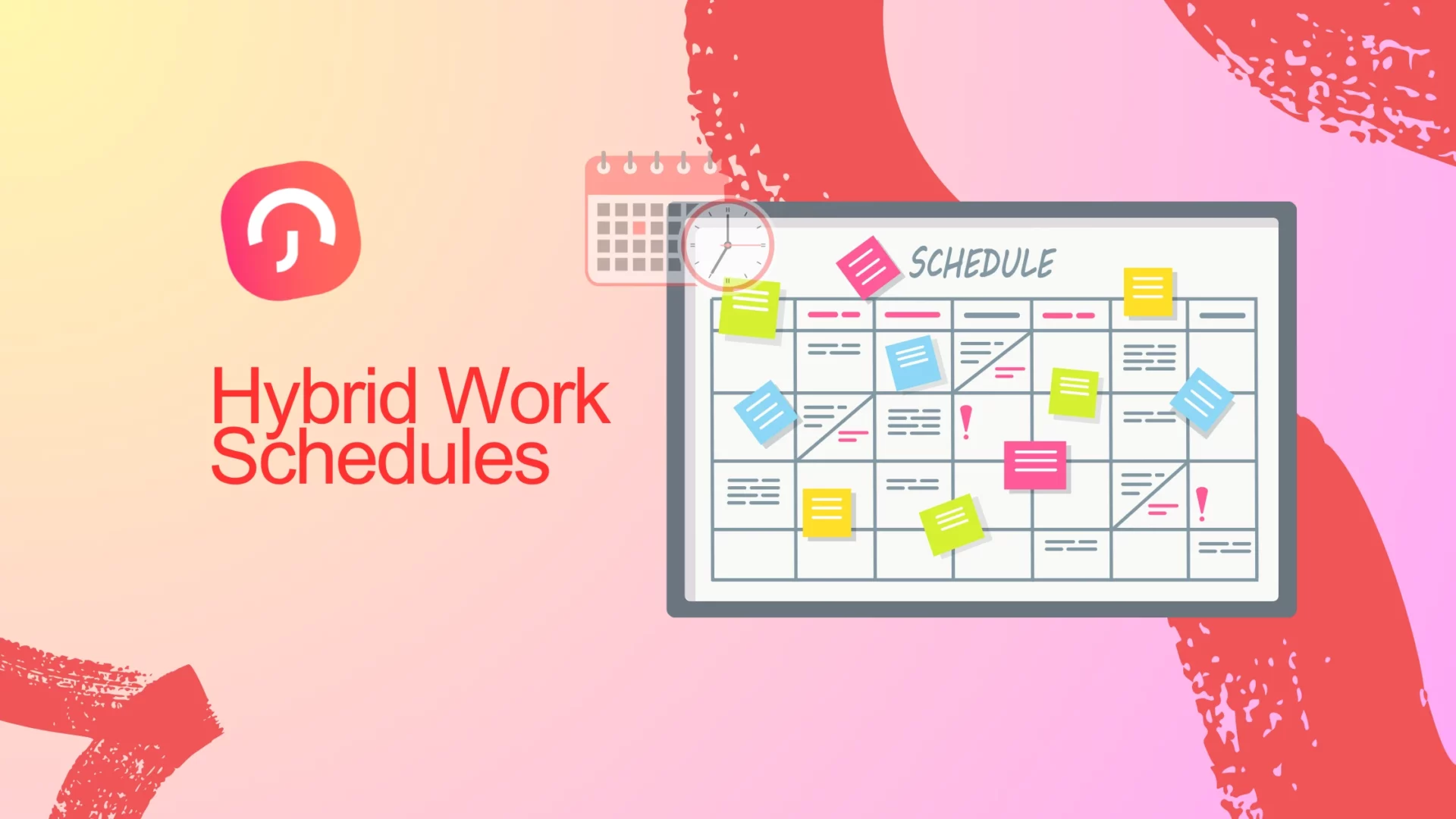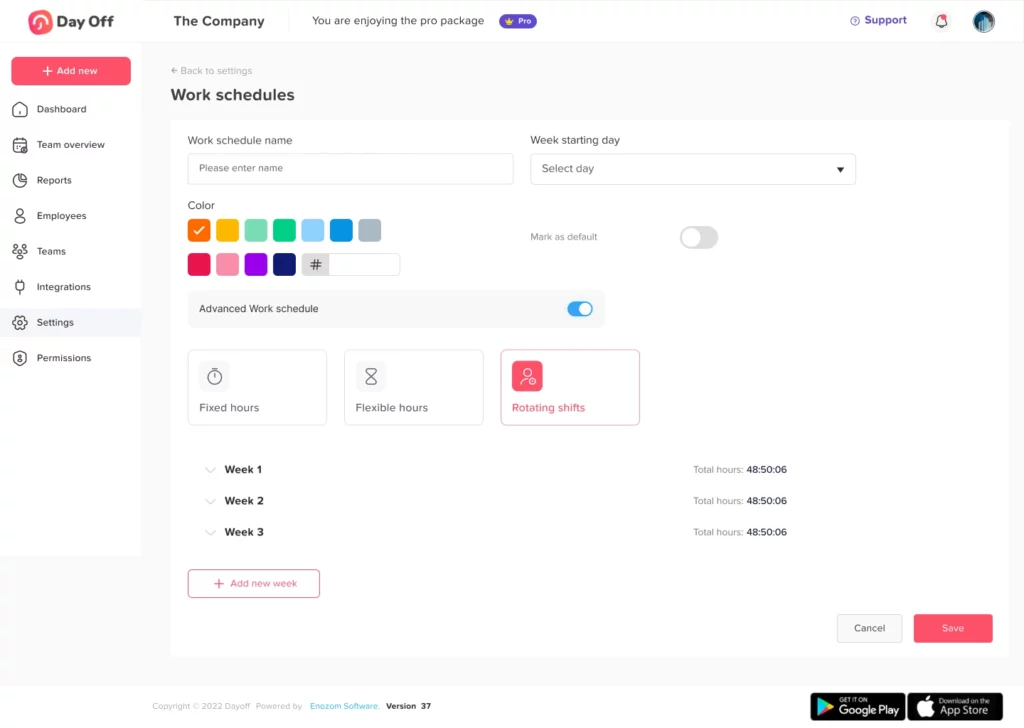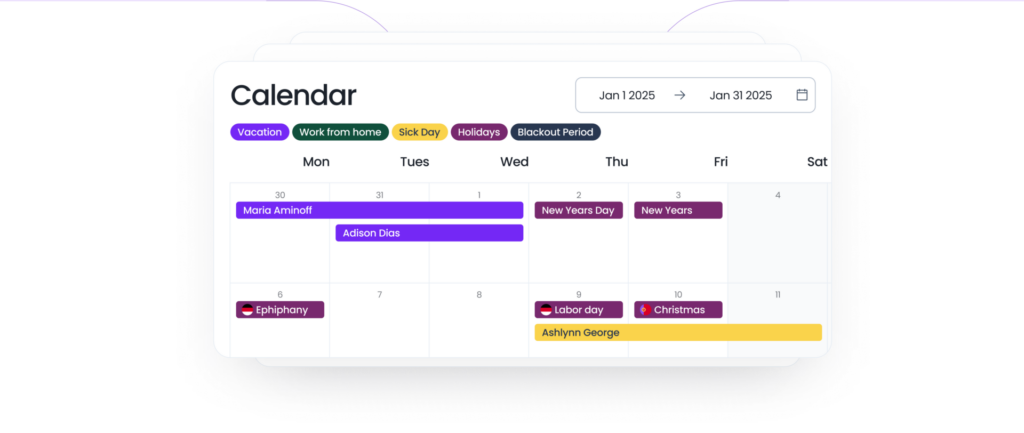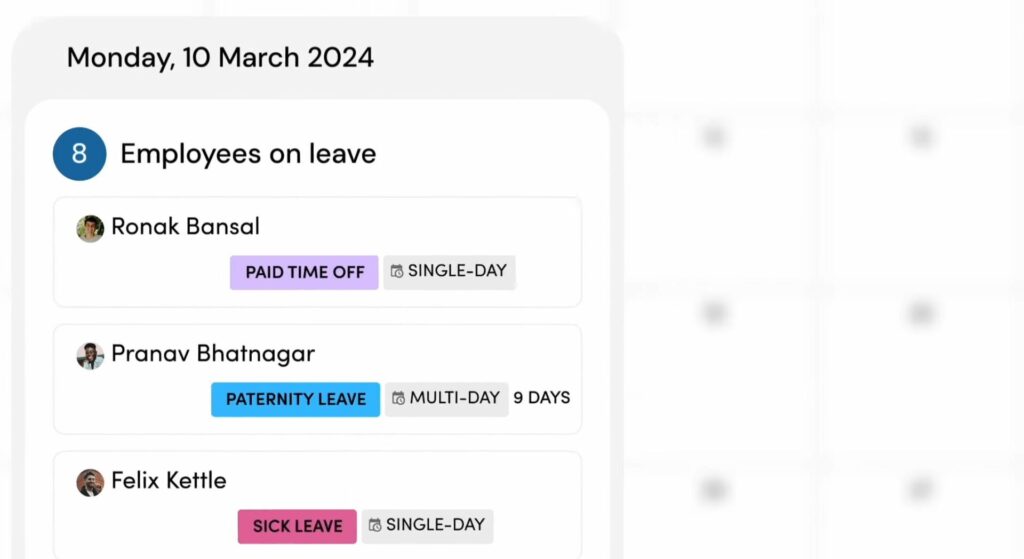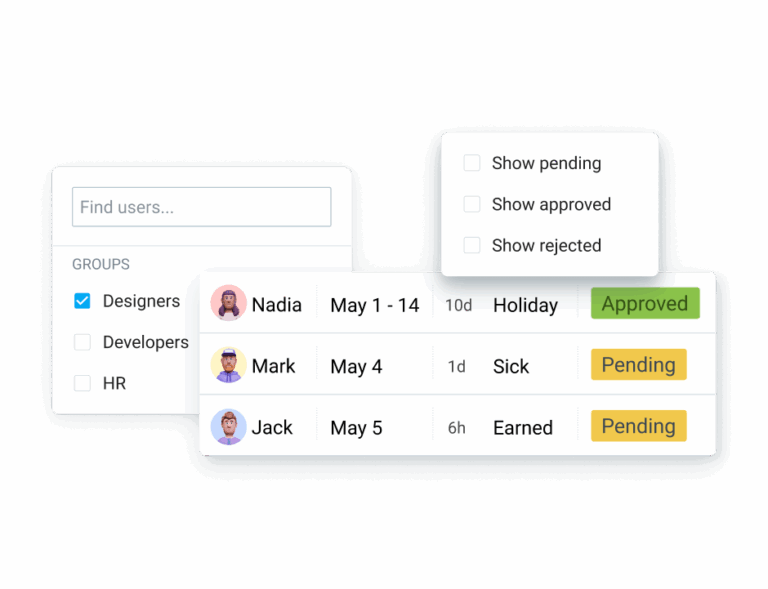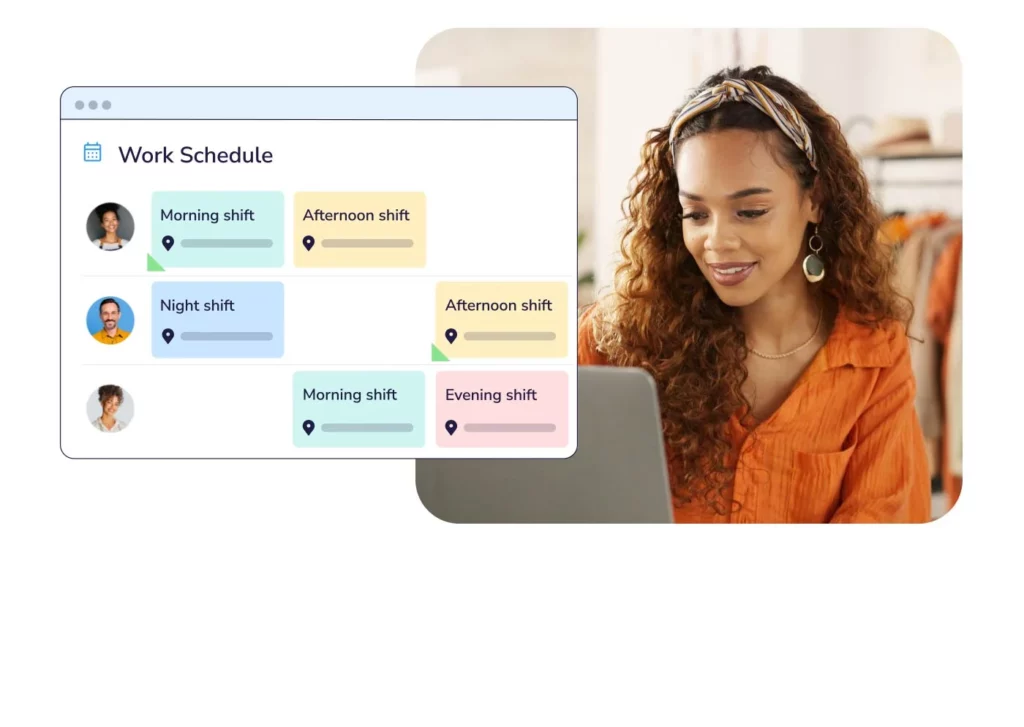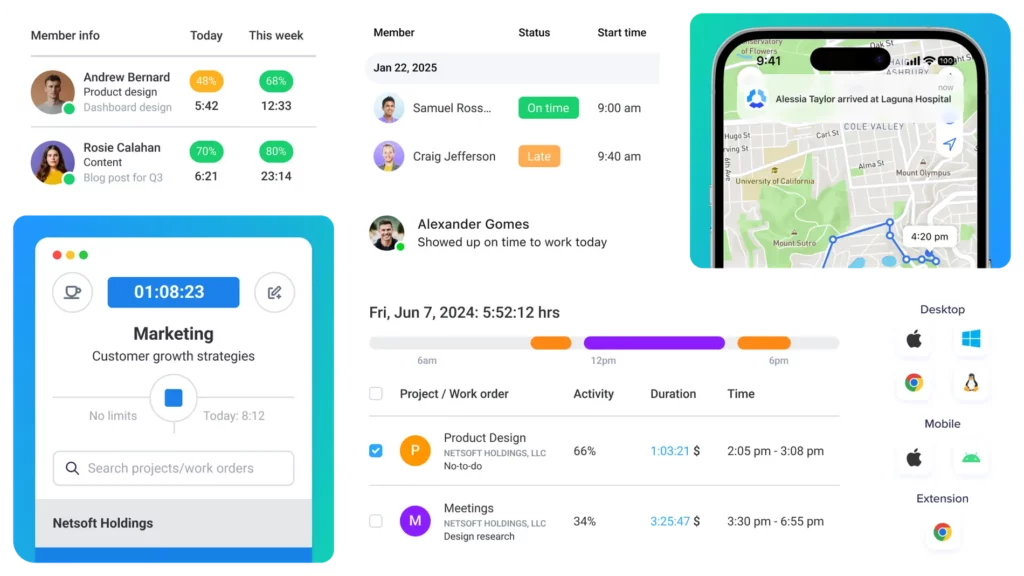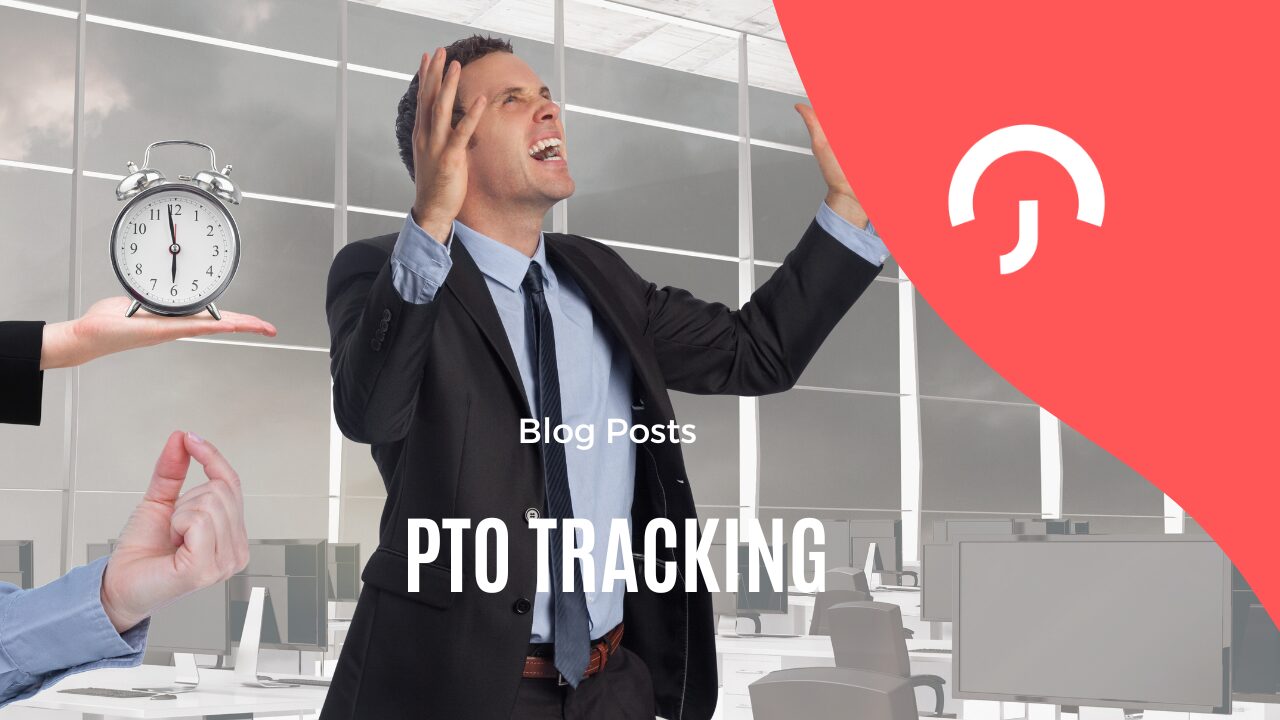Balancing productivity with personal well-being is essential in any workplace. No employee can be “on” all the time, there will always be moments when they need to step away, whether for a planned vacation, an unexpected illness, or a family responsibility. To keep work running smoothly during these absences, organizations need a clear and structured process. That’s where leave requests come in. More than just asking for time off, a leave request is a professional system that ensures transparency, fairness, and continuity across the team.
In this article, we’ll break down what a leave request is, why it’s important, the different types of leave, and how to write one effectively. We’ll also share best practices for both employees and employers, and introduce a powerful tool, Day Off, that makes leave management simple and stress-free.
What Is a Leave Request?
A leave request is a formal communication submitted by an employee to their employer or manager, asking for time away from work for a specific reason and duration. It can be short-term, such as a single day off for personal errands, or long-term, such as maternity leave, medical leave, or a sabbatical.
Unlike a casual conversation about needing time off, a formal leave request serves as official documentation. It ensures that the employee’s absence is recognized and approved, making it easier for managers to plan around it.
A properly documented leave request not only respects workplace rules but also builds trust. It reassures the organization that the employee is responsible and committed to maintaining transparency. At the same time, it gives the employee confidence that their time off is acknowledged and protected.
Why Are Leave Requests Important?
Leave requests go far beyond simple paperwork, they play a crucial role in workplace organization, communication, and employee well-being. By setting clear expectations and ensuring fairness, they help teams stay productive while giving employees the flexibility they need. Let’s take a closer look at why leave requests truly matter
Workplace Organization and Planning
When employees submit leave requests in advance, managers can redistribute workloads, assign backup responsibilities, or adjust project deadlines. This proactive planning prevents last-minute disruptions and ensures that business operations continue smoothly even in the absence of key staff members.
Professionalism and Respect
Submitting a formal leave request demonstrates an employee’s professionalism. It shows that they respect company policies, value team coordination, and understand the impact of their absence on colleagues. On the employer’s side, respecting leave requests reflects a commitment to treating employees fairly.
Accurate Documentation
Leave requests create a written record that protects both the employee and employer. For employees, it provides proof that time off was approved; for employers, it allows HR to track attendance, calculate payroll accurately, and comply with labor regulations. This is especially important in larger organizations where managing attendance manually is nearly impossible.
Protecting Employee Rights
In many countries, labor laws require employers to provide specific types of leave, such as sick leave, maternity leave, or bereavement leave. Formal leave requests ensure these rights are recorded and respected. Without documentation, employees may face unnecessary disputes or misunderstandings about their entitlements.
Supporting Work-Life Balance
By encouraging leave requests, companies foster a healthier work environment. Employees feel more comfortable taking necessary breaks, which prevents burnout and boosts long-term productivity. When time off is managed fairly, it builds trust and improves overall job satisfaction.
Types of Leave Requests
Different life situations call for different types of leave. Understanding these categories helps both employees and managers handle requests more effectively and ensures fairness in the workplace.
Annual Leave / Vacation Leave
Annual leave is the most common type of leave, typically planned in advance for holidays, personal rest, or travel. Employees use it to recharge, spend time with family, or simply take a mental break from work. Employers often encourage early notice for vacation requests to avoid scheduling conflicts or multiple team members being away simultaneously. Well-managed vacation leave doesn’t just benefit employees, it reduces stress, prevents burnout, and ensures the team returns refreshed and more productive.
Sick Leave
Sick leave allows employees to recover from illness or injury without the added worry of income loss or falling behind on work. Some organizations require a doctor’s certificate if the absence goes beyond a certain number of days to ensure accountability. Importantly, offering adequate sick leave prevents contagious illnesses from spreading in the workplace, protecting overall team health. A supportive sick leave policy also signals that the company genuinely cares about employee well-being, which strengthens trust and loyalty.
Maternity and Paternity Leave
This type of leave supports employees during the life-changing event of welcoming a child. Depending on local labor laws and company policies, maternity and paternity leave can last from a few weeks to several months. Beyond giving parents the necessary time to care for their newborns, these policies reflect an organization’s commitment to family values and work-life balance. Companies that provide generous parental leave often experience stronger employee retention, as workers feel supported during one of the most important stages of their lives.
Emergency or Compassionate Leave
Life is unpredictable, and emergencies such as a serious family illness, bereavement, or crises require immediate flexibility. Emergency or compassionate leave allows employees to step away from work quickly and focus on urgent personal matters without fearing job repercussions. Employers who handle such situations with empathy and understanding not only help employees during difficult times but also build stronger loyalty and trust. Employees are more likely to remain committed to organizations that stand by them during hardships.
Unpaid Leave
When paid leave balances run out, employees may request unpaid leave for an extended time off. This type of leave is often used for personal reasons such as long-term travel, family responsibilities, or recovery from an extended illness. While it can present financial challenges, unpaid leave provides valuable flexibility when other options are unavailable. Open and transparent communication between employers and employees is essential here, clear expectations around duration and return-to-work arrangements help avoid misunderstandings or conflicts.
Sabbatical Leave
A sabbatical is an extended break from work, often lasting several months, that employees take for personal growth, research, academic study, or career development. Unlike annual leave, sabbaticals are typically planned well in advance and may be partially or fully unpaid. Organizations that offer sabbaticals send a strong message that they value long-term employee development and well-being. Employees often return from sabbaticals with renewed motivation, fresh ideas, and a broader perspective that can benefit the company.
Study or Training Leave
In many industries, employees pursue additional education or training to enhance their skills and advance their careers. Study or training leave allows them to focus on certifications, workshops, or degree programs without the burden of managing full-time work simultaneously. Employers who support this type of leave not only invest in the employee’s personal growth but also benefit from the new knowledge and expertise that the employee brings back to the organization. It’s a win-win that fosters professional development and strengthens overall company performance.
How to Write a Good Leave Request
A leave request should always be polite, professional, and easy to understand. The goal is to provide your manager or HR with all the necessary details while showing responsibility, respect, and consideration for the team. A well-written request not only increases the chances of approval but also demonstrates your professionalism. Here are the key steps to writing an effective leave request:
Start with a Proper Greeting
Always address your request to the correct person, whether it’s your direct manager, the HR department, or both. Using a professional greeting such as “Dear [Manager’s Name]” sets the right tone, while casual greetings may come across as careless. A respectful start establishes that you take the process seriously.
State the Reason Clearly (but Briefly)
Be transparent about the reason for your leave, but keep it brief and professional. For example, “medical reasons,” “personal matters,” or “family obligation” is usually sufficient. You don’t need to overshare private details unless your company requires additional documentation. This balance ensures honesty while maintaining professionalism.
Provide Specific Dates
Clarity is crucial. Avoid vague requests like “a few days off” or “next week.” Instead, clearly state the exact start and end dates of your leave. If there’s a chance your absence could extend, such as in the case of illness, mention it upfront (e.g., “tentatively until [date], pending medical advice”). This allows managers to plan workloads and timelines with accuracy.
Offer a Work Handover Plan
Showing how your tasks will be managed in your absence demonstrates responsibility and teamwork. If possible, explain how you’ve updated your work, delegated responsibilities, or prepared a handover note for colleagues. This step not only reassures your manager that operations won’t be disrupted but also reflects your commitment to the team’s success, even when you’re away.
Express Gratitude and Willingness to Cooperate
Always close your leave request with a polite thank you. Acknowledge your manager’s role in reviewing and approving your request, and show openness to provide more details or documentation if needed (such as a medical certificate). A thoughtful closing reinforces professionalism and leaves a positive impression.
Best Practices for Employees Requesting Leave
Plan Ahead
Whenever possible, submit your leave request well in advance, ideally weeks before your intended absence. Early planning gives managers time to adjust schedules, redistribute work, or arrange temporary coverage. This increases the likelihood of approval and prevents unnecessary stress for your team.
Respect Peak Work Seasons
Be mindful of your company’s busy periods, such as end-of-quarter reporting, product launches, or holiday rushes. Requesting time off during these critical times may not be feasible unless it’s an emergency. By showing awareness of the company’s workflow, you demonstrate professionalism and a team-first attitude.
Be Honest and Transparent
Always provide a truthful reason for your leave request. You don’t need to overshare personal details, but honesty builds trust and avoids potential conflicts. For example, if you’re taking time off for a medical reason, simply stating “medical leave” is sufficient. Managers appreciate transparency because it allows them to handle requests fairly.
Help With Coverage
Show initiative by suggesting how your responsibilities can be managed while you’re away. This might include completing urgent tasks beforehand, preparing a handover document, or asking a colleague to step in temporarily. Offering solutions shows that you’re not only thinking about your own needs but also considering the impact on the team.
Follow the Official Process
Always use the company’s required method for submitting leave requests, whether it’s through an HR portal, official form, or email. Skipping or bypassing the process can cause confusion and delays. Following protocol shows professionalism and ensures that your request is properly documented.
Best Practices for Employers Handling Leave Requests
Acknowledge Quickly
Respond to leave requests promptly, even if it’s just to confirm receipt. Delayed responses create uncertainty and make it harder for employees to plan their commitments. A quick acknowledgment shows respect and builds trust.
Be Fair and Consistent
Apply the same rules and standards to all employees. Playing favorites or making inconsistent decisions can harm morale and create resentment within the team. A fair and transparent process ensures employees feel valued and treated equally.
Respect Confidentiality
If an employee shares the reason for their leave, handle it with discretion. Medical conditions, family matters, or personal challenges should remain private unless the employee chooses to disclose them openly. Protecting confidentiality strengthens trust between employees and management.
Show Compassion
While policies are important, compassion goes a long way, especially when dealing with emergencies, family issues, or bereavement. A flexible and empathetic approach helps employees feel supported during difficult times, which can strengthen loyalty and improve workplace culture.
Balance Team Workload
When one employee is away, it’s important to ensure that their absence doesn’t overwhelm the rest of the team. Redistribute tasks fairly, consider temporary assistance if necessary, and communicate clearly with the team about changes. This prevents burnout and keeps productivity steady.
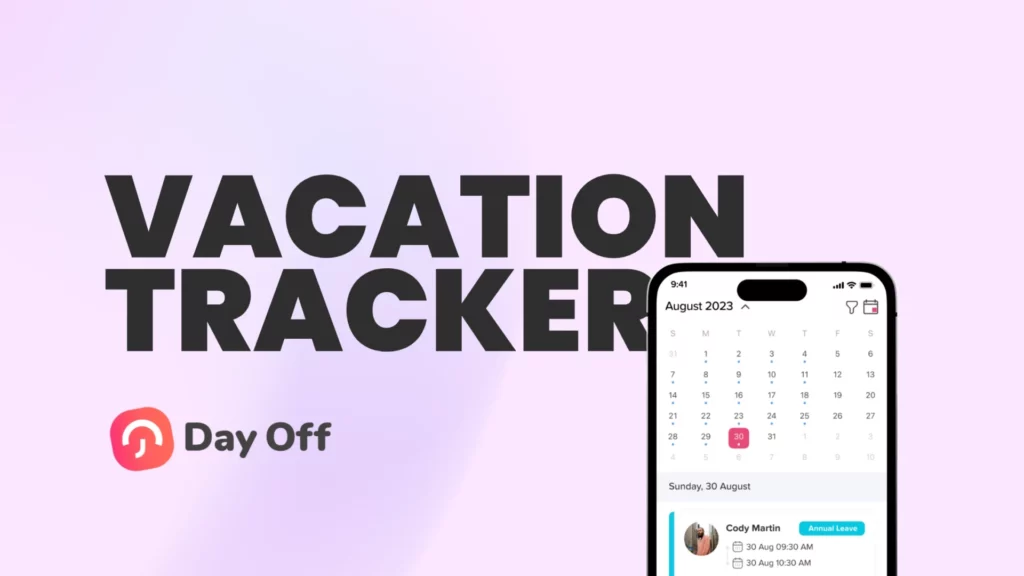
Managing leave requests manually, through emails, spreadsheets, or paper forms, can quickly become messy and time-consuming, especially as organizations grow. Requests can get lost, approvals may be delayed, and tracking balances often leads to errors. This is where Day Off makes a difference.
Day Off is a modern, user-friendly leave management software built to streamline how companies handle time-off requests. Here are some of its most valuable features:
Easy Leave Requests
Employees can request time off in just a few clicks, without needing to fill out lengthy forms or send multiple follow-up emails. The interface is designed to be intuitive, so employees can quickly select their leave type, add dates, and submit. This saves time and removes the frustration of dealing with outdated manual processes.
Manager Approvals
Supervisors and managers receive instant notifications when a leave request is submitted. They can approve or reject requests with a single tap, ensuring quick decisions and reducing delays. This efficiency benefits both sides; employees get timely responses, and managers can stay on top of team availability without drowning in paperwork.
Team Calendar View
One of the most powerful features of Day Off is its shared team calendar. Managers can see who is scheduled to be away at any given time, making it easier to avoid overlapping absences and potential staffing shortages. For employees, this transparency helps them choose dates that won’t disrupt important projects or overburden colleagues.
Custom Leave Types
Every company has its policies when it comes to time off, whether that’s vacation leave, sick leave, unpaid leave, parental leave, or special categories. Day Off allows organizations to set up custom leave types that match their policies, ensuring clarity and consistency. This flexibility makes it suitable for businesses of all sizes and industries.
Automated Tracking
Instead of juggling spreadsheets or relying on memory, Day Off automatically tracks leave balances, accruals, and history for each employee. This eliminates human error, reduces disputes, and gives HR accurate data for payroll and compliance. Managers also gain insight into patterns, such as frequent sick leave or peak vacation seasons, which can help with workforce planning.
Mobile-Friendly Access
Employees and managers need flexibility. Day Off is fully mobile-friendly, allowing people to submit or approve requests on the go, from their phone, tablet, or laptop. This accessibility ensures that important leave decisions aren’t delayed simply because someone is away from their desk.
Common Mistakes to Avoid
Both employees and employers can unintentionally make mistakes in the leave request process. Recognizing these pitfalls helps create a smoother, more professional system for everyone.
For Employees
Waiting Until the Last Minute to Request Leave
Submitting leave requests at the last minute creates unnecessary stress for managers and colleagues. It leaves little time to adjust workloads, arrange coverage, or shift deadlines. While emergencies are sometimes unavoidable, non-urgent absences should always be planned and communicated well in advance.Failing to Specify Dates
Vague requests such as “I’ll need a few days off next week” make it difficult for managers to approve and plan accordingly. Clear start and end dates are essential for proper scheduling. Without them, misunderstandings can arise, leading to missed deadlines, overlapping absences, or even payroll errors.Ignoring Company Procedures
Every organization has its own system for handling leave requests, whether through HR software, email, or official forms. Skipping the process or relying only on informal conversations can cause requests to get lost or overlooked. Following the official procedure ensures your leave is documented, approved, and tracked correctly.
For Employers
Not Responding in a Timely Manner
Delays in approving or rejecting leave requests leave employees in limbo, making it difficult for them to finalize personal plans. Prompt acknowledgment, even if a final decision takes longer, shows respect for employees’ time and builds trust in the process.Being Inconsistent with Approvals
Applying different standards to different employees creates resentment and perceptions of favoritism. For example, approving last-minute leave for one person but denying it for another can damage team morale. Consistency is key to maintaining fairness and credibility.Making Employees Feel Guilty About Taking Leave
Leave is a right, not a favor. When managers make employees feel guilty or imply that their absence will cause problems, it discourages people from taking the necessary time off. This can lead to burnout, decreased productivity, and lower job satisfaction. Encouraging a healthy use of leave helps employees return refreshed and more engaged.
Startup
- 25 Employees
- Single Approver
- Three Policies
- Unlimited Team
- Unlimited Locations
Frequently Asked Questions (FAQ) About Leave Requests
What is the difference between a leave request and simply informing my manager?
A leave request is a formal, documented process, while simply informing your manager is more of an informal conversation. The difference is important:
Formal Leave Request: Provides an official record, protects your rights, and ensures payroll, HR, and scheduling systems are updated correctly.
Informal Notice: Might get overlooked, forgotten, or disputed later, especially in larger organizations.
Submitting a proper leave request ensures your absence is recognized, approved, and protected from misunderstandings.
How far in advance should I submit a leave request?
It depends on the type of leave and your company’s policies. As a general guideline:
Annual/Vacation Leave: At least 2–4 weeks in advance. This allows managers to plan team schedules and avoid overlapping absences.
Short Personal Leave (1–2 days): A few days’ notice is usually enough.
Sick Leave: Notify your manager as soon as possible, ideally the same day. Extended sick leave may require a medical certificate.
Emergency Leave: Immediate notification is acceptable, even on the same day, but always follow up with a formal request.
The earlier you plan, the higher your chances of approval and smoother team coordination.
Can my employer deny my leave request?
Yes, employers have the right to deny certain leave requests, especially discretionary ones like vacation, if they conflict with critical business needs, such as:
Multiple employees requesting the same period.
Upcoming deadlines, events, or peak work seasons.
Insufficient staffing to cover your absence.
However, employers cannot deny statutory leave (e.g., maternity/paternity leave, sick leave, bereavement leave) if it’s protected by law. Always check both your company policy and local labor laws.
What should I do if my leave request is denied?
If your request is denied, here’s how to handle it professionally:
Ask for Clarification, understand why it was denied (business needs, timing issues, etc.).
Propose Alternatives: Suggest shifting your dates, taking partial days, or adjusting your schedule.
Negotiate, Offer to complete urgent tasks before you leave, or check if remote work is possible during your absence.
Review Your Rights, Ensure the denial aligns with company policy and labor laws.
Often, a denied leave is not a flat “no” but rather a “not right now.” Flexibility and communication go a long way.
Do I always need to give a reason for my leave?
Yes, but the level of detail depends on the type of leave:
Vacation Leave: A brief note like “personal travel” or “holiday” is enough.
Sick Leave: Most companies require just “illness” or “medical reasons,” with a doctor’s note if extended.
Family or Emergency Leave: A short explanation like “family emergency” or “bereavement” is acceptable.
You don’t need to overshare private details. Be honest, but keep it professional and concise.
What happens if I don’t follow the official leave request process?
Skipping the official process can create serious problems:
Your absence may be marked as unauthorized, which could affect your pay or leave balance.
Payroll or HR may not record your time off correctly.
Repeated failure to follow procedure may result in disciplinary action.
Using the official process protects both you and your employer. It ensures transparency, fairness, and proper record-keeping.
How can employers make leave requests easier to manage?
Employers can simplify leave requests by:
Using Leave Management Software (like Day Off) to centralize requests, approvals, and balances.
Establishing Clear Policies that explain how to apply, how much notice is required, and how approvals are handled.
Responding Promptly to reduce employee stress and uncertainty.
Balancing Workloads by planning coverage fairly across the team.
Being Transparent by making calendars visible, so employees can plan responsibly.
When leave management is simple and fair, it boosts morale and reduces workplace stress.
Can I request multiple types of leave at once?
Yes, in some cases, you can combine leave types. For example:
An employee might take sick leave followed by unpaid leave if recovery takes longer than paid allowances.
A parent may combine maternity/paternity leave with annual leave to extend time at home.
Employers should review these on a case-by-case basis, ensuring company policies and labor laws are followed. Clear documentation is essential to avoid confusion.
What’s the best way to increase the chances of my leave request being approved?
To maximize approval chances:
Submit Early: Advance notice gives managers more flexibility.
Avoid Peak Busy Times: If possible, schedule leave outside of high-demand seasons.
Be Flexible: Offer alternative dates if your first choice isn’t feasible.
Provide a Coverage Plan: Show how your work will be managed in your absence.
Communicate Professionally: A polite, well-structured request goes a long way.
The more proactive and considerate you are, the easier it is for your manager to say yes.
Why should companies use leave management software instead of emails or spreadsheets?
Emails and spreadsheets may work for small teams, but they quickly become inefficient as organizations grow. Leave management software like Day Off provides:
Centralized Requests, No lost emails or forgotten messages.
Real-Time Team Calendars, Managers instantly see who’s away and when.
Automated Tracking, Balances, accruals, and histories are updated automatically.
Quick Approvals: Managers can approve with one click, even from mobile.
Reduced Errors, No manual calculations, fewer disputes.
This saves HR teams countless hours, reduces stress, and ensures fairness across the workplace.
Conclusion
Managing leave requests effectively is essential for maintaining both productivity and employee well-being. For employees, submitting clear, timely, and professional requests ensures smooth communication and minimizes disruption. For employers, handling requests fairly, consistently, and with compassion helps build trust, reduce burnout, and strengthen workplace culture.
With the right approach and tools like Day Off, organizations can transform leave management from a stressful process into a seamless one. The result is a healthier balance between business needs and employee satisfaction, where both sides benefit.

